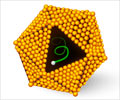New data demonstrates substantial improvements in the detection of both hepatocellular carcinoma (HCC) and cholangiocarcinoma (CC) using diagnostic urine tests.

Preliminary data demonstrate the performance of urinary metabolites in helping to diagnose HCC. Urine samples were collected from four subject groups in West Africa on the case-control platform of PROLIFICA 'Prevention of Liver Fibrosis and Carcinoma in Africa' as follows: patients with HCC (n=65), cirrhosis (Cir, n=36), non-cirrhotic liver disease (DC, n=110) and healthy controls (NC, n=91). HCC patients were diagnosed using EASL guidelines.
Multivariate analyses of urinary nuclear magnetic resonance (NMR) spectra showed a distinct profile for urine of patients with HCC compared to Cir, DC and NC with sensitivity of 87%, 86% and 97% respectively. These results suggest that Urinary metabolite profile outperforms serum AFP which only differentiated HCC from these groups by 79% (Cir), 75% (DC) and 76% NC) respectively. The metabolites that were significantly increased (p< 0.001) in HCC patients compared to all groups of control were methionine, acetylcarnitine, carnitine, N-acetylglutamate, 2-oxoglutarate, indole-3-acetate, and creatine; whereas creatinine was significantly lower in HCC than controls.
EASL General Secretary, Prof. Mark Thursz commented: "These findings will be welcomed by physicians as they validate urinary metabolic profiling as a potential screening tool for HCC, with superior diagnostic accuracy to serum AFP and – if investigated further and put into practice – this non-invasive technique could simplify and improve clinical diagnosis and outcomes for patients."
Similarly, detection of CC remains a diagnostic challenge and physicians will be encouraged by results from a Phase II study showing that a combined bile and urine proteomic test increased diagnostic accuracy of CC in patients with biliary strictures (an abnormal narrowing of the common bile duct) of unknown origin.
Having recently established diagnostic peptide marker models in bile and urine to detect both local and systemic changes during CC progression, investigators combined both models with the aim of reaching a higher diagnostic accuracy.
Advertisement
A logistic regression model composed of the bile and urine proteomic classification factors lead to an area under curve (AUC) of 0.96, and 92% sensitivity and 84% specificity at the best cut-off. Only three of the 36 CC patients were false negative and two of the 33 PSC patients were false positive classified. Inclusion of CA19-9 and bilirubin values to the logistic regression model was of minor benefit.
Advertisement
Disclaimer: the data referenced in this release is based on the submitted abstract. More recent data may be presented at the International Liver Congress™ 2013.
Source-Eurekalert















